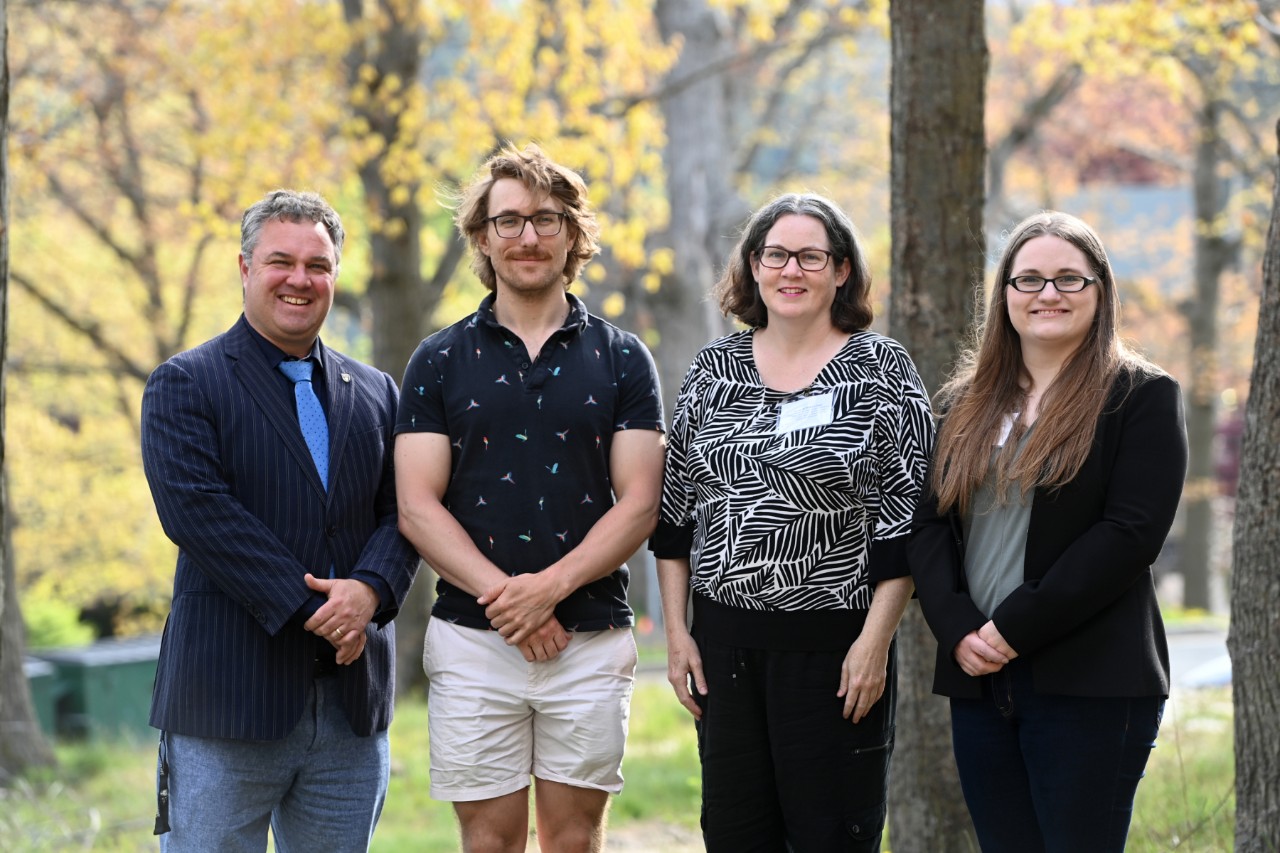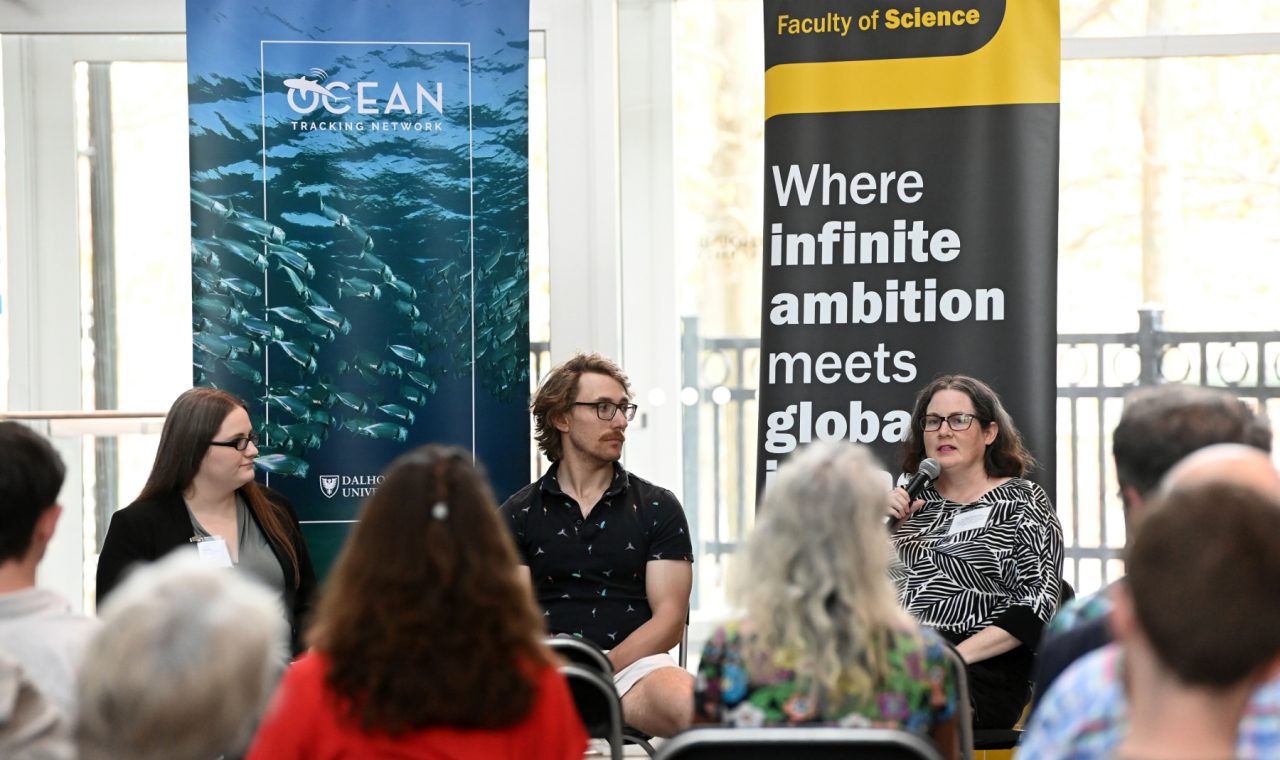Posted: June 26, 2024
By: Jocelyn Adams Moss
Aquatic invasive species are fish, invertebrates or plant species that have been introduced into a new aquatic environment outside of their natural range. Once introduced, these species can grow quickly as they don't have natural predators in their new environment.
The result? They can outcompete and harm native species.
“The impacts of aquatic invasive species cannot be understated. They have cascading, negative impacts not only on the ecosystems into which they are introduced but also on the economies dependent on those systems,” says Julie Gaal (MMM’24), a recent grad from Dal’s Marine Affairs Program.
Gaal was joined by Dal aquatic invasive species (AIS) experts at a public lecture on campus in late May in the lead up to World Ocean Month (June).
“Events such as this are important in raising awareness and educating people so they can do their part in preventing the introduction and spread of AIS,” explained Gaal, who served as moderator at the fourth-annual event hosted by the Faculty of Science.
This year’s theme explored the impact aquatic invasive species (AIS) have on Nova Scotia’s marine ecosystem.
The event, which also served as a kick-off to Dal Alumni Days, was held place in the atrium of the Steel Ocean Sciences Building, the future home of The Beaty Centre for Marine Biodiversity — a first-of-its-kind interactive ocean and science discovery centre set to open in 2025.
Speakers included Dr. Robert Lennox (BSc’13), scientific director of the Ocean Tracking Network (OTN), and Dr. Sarah Stewart-Clark, an associate professor with the Faculty of Agriculture’s Department of Animal Science and Aquaculture and the Department of Biology.
 Left to right: Dean of Science, Dr. Chuck Macdonald, Dr. Robert Lennox, Dr. Sarah Stewart-Clark and Julie Gaal. (Danny Abriel photos).
Left to right: Dean of Science, Dr. Chuck Macdonald, Dr. Robert Lennox, Dr. Sarah Stewart-Clark and Julie Gaal. (Danny Abriel photos).
Tracking invaders
All it takes is one person to cause a problem.
Dr. Stewart-Clark, a leading expert on aquatic invasive species, explained how government policies and regulations are critical in addressing issues around the spread of aquatic invasive species such as in the ballast tanks and pet stores.
"If anyone has an aquatic pet that they need to surrender, please do so responsibly instead of releasing it into the natural environment,” says Dr. Stewart-Clark. “Once an aquatic species is released into our native ecosystems they cause significant damage. You can return it to the pet store you bought if from or can contact DFO or the province for its safe transfer."
Dr. Lennox emphasized the importance of public education and shared details on the latest research on invasive species at the Ocean Tracking Network.
“I've studied ecosystems and invasive species for a long time. There is a lot to know about how to prevent or manage AIS, getting the message out and educating people so that they understand the dire consequences of their actions is extremely important, and is one of our best hopes to keep the spread of AIS down,” says Dr. Lennox.
Dr. Lennox says his team has worked on several ecosystems that have been heavily impacted by invasions.
“We use tracking technology in different ways to study AIS and the native species that they impact,” he explains. “This is certainly going to become an increasingly important component of the work that we do given the urgency of addressing AIS. Pink salmon, green crab, smallmouth bass, sea lamprey, and Indo-Pacific lionfish are a few examples of species that are being tracked to understand their biology and support efforts to minimize their impacts.”
Members of the public had the opportunity to ask questions and learn about prevention methods as scientists answered burning questions about the ocean and coastal protection.
To learn more about aquatic invasive species and additional resources, please visit the Nova Scotia Department of Fisheries and Aquaculture website.
